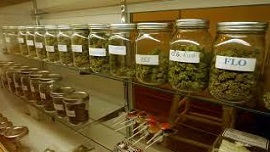BC & NATIONAL Breaking News – Archive [July 2018]
by West Shore Voice News
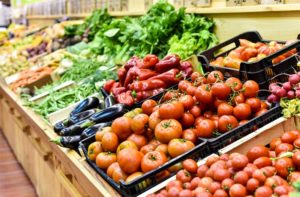 Tuesday, July 31 ~ BC. September deadline approaching for organic food and beverage certification.
Tuesday, July 31 ~ BC. September deadline approaching for organic food and beverage certification.
Producers are reminded that in one month, a new, strengthened regulatory approach for domestically marketed organic food and beverage products will be in place in British Columbia.
Beginning September 1, 2018 the BC government is regulating the term “organic.” This means food and beverage products marketed in British Columbia as “organic” will be required to be certified through an accredited federal or provincial program.
The modern system will provide consumers with confidence that the BC organic agriculture products they enjoy will be backed up with standards and requirements for the key words and phrases used to describe and market them.
Uncertified producers in the province marketing their food or beverage products as “organic” will face the possibility of penalties, including a $350 fine.
The new regulations were originally announced in 2016. Non-certified producers have been provided with a lengthy transition period to September 2018 to allow the time to complete the certification process.
Further information on BC’s organic food and beverages and amendments to the current provincial regulation: https://www2.gov.bc.ca/gov/content/industry/agriculture-seafood/animals-and-crops/organic-food-and-beverages
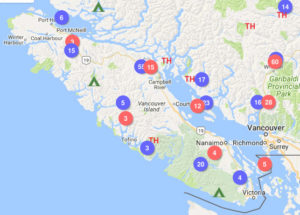
“People are passionate about spending time in our beautiful provincial parks, and that has increased demand for camping opportunities,” said George Heyman, Minister of Environment and Climate Change Strategy.
“The additional campsites, combined with upgrades to existing facilities, will improve the overall experience of BC’s natural beauty and provide a range of camping opportunities for everyone to enjoy.”
Ranging from backcountry to group camping, the new campsites are a mix of BC Parks and forestry recreation sites in areas with the highest demand: the Kootenay Rockies, Thompson Okanagan, Lower Mainland and Vancouver Island.
“With the expansion, there are now 11,000 camping spaces at 1,100 recreation sites around the province, for those who enjoy a more rustic experience,” said Doug Donaldson, Minister of Forests, Lands, Natural Resource Operations and Rural Development.
Along with the additional campsites, existing facilities and infrastructure have been upgraded or added in many campgrounds. This includes roads, water taps, power, dishwashing stations, accessible toilets, trails and a new large shower building at the Hampton campground in E.C. Manning Provincial Park. A new playground has been installed at Shuswap Lake. Walk-in sites at Montague Harbour all have individual food caches.
“The expanded mix of BC Parks and forestry recreation site campsites is very welcome news,” said Joss Penny, chair, Camping and RVing BC Coalition. “More than two million campers from BC, Alberta and Washington are expected to camp or RV in British Columbia in the next two years.”
Last Saturday, July 21, Canada’s Parks Day was an annual event to highlight the importance of parks in creating and maintaining healthy ecosystems, protecting critical habitat for species at risk, and contributing to human health and well-being. Educational and family-oriented events were held in parks and historic sites across the country.
BC Parks Foundation has launched the Healthy By Nature initiative, where 100 health-care providers will lead walks in 100 parks throughout B.C. to highlight the health benefits of spending time in nature. To register locally: healthybynature.ca
British Columbia’s provincial parks receive over 21 million visits each year. There are 1,033 provincial parks, recreation areas, conservancies, ecological reserves and protected areas, covering more than 14 million hectares, or about 14.4% of the provincial land base.
BC Parks manages the third-largest parks system in North America, exceeded only by the United States’ National Park Service and Parks Canada. http://www.env.gov.bc.ca/bcparks/
As of June 30, 2018, BC Parks had nearly 168,000 reservations made through the Discover Camping reservation service, with the majority of reservations originating within BC. Of the 10,700 campsites BC Parks manages, approximately 55% are reservable, and 45% remain available on a first-come, first-served basis.
Recreation sites and trails: http://www.sitesandtrailsbc.ca/
Most of the new campsites in BC Parks are either on the Discover Camping Reservation Service, or will be for the 2019 camping season. Camping for recreation sites is on a first-come, first-served basis. Reservations can be made online: https://secure.camis.com/DiscoverCamping/Home.aspx
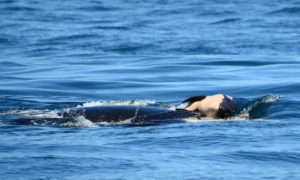
The newborn whale was reported alive and swimming with its mother, J35, and other members of J-pod near Clover Point on the Victoria shoreline in mid-morning. A Center for Whale Research (CWR) team was on the water in Haro Strait at the time and immediately responded to photo-document the newborn calf for the long-term census study that the Center for Whale Research maintains for the US and Canadian governments.
Unfortunately, by the time the CWR crew arrived on scene, the newborn calf was deceased, and the pod had traveled several miles eastward of the reported sighting location. The baby’s carcass was sinking and being repeatedly retrieved by the mother who was supporting it on her forehead and pushing it in choppy seas toward San Juan Island, USA. The mother continued supporting and pushing the dead baby whale throughout the day until at least sunset.
A resident of San Juan Island near Eagle Cove reported: “At sunset, a group of 5 to 6 females gathered at the mouth of the cove in a close, tight-knit circle, staying at the surface in a harmonious circular motion for nearly 2 hours. As the light dimmed, I was able to watch them continue what seemed to be a ritual or ceremony. They stayed directly centered in the moonbeam, even as it moved. The light was too dim to see if the baby was still being kept afloat. It was both sad and special to witness this behavior.”
As of sunset last night, July 25, J35 was still pushing the dead calf near East Point, Saturna Island. Killer whales and dolphins have been known to support and transport their dead calves for as long as a week – a testament to the amazingly strong mother/offspring bond and caring.
The newborn orca will not be given an alpha-numeric designation as a member of the SRKW population because it did not survive long enough to demonstrate its viability. Approximately 75% of newborns in the recent two decades following designation of the Southern Resident killer whale population as “Endangered” have not survived, and 100% of the pregnancies in the past three years have failed to produce viable offspring. The Department of Commerce, NOAA Fisheries, has designated the SRKW population as a “Species in the Spotlight” due to its imminent threat of extinction.
The SRKW population decline and poor reproduction is thought to be food related, given that populations of Chinook salmon (primary prey for the SRKW) seem to be challenged.
The American Fisheries Society in its landmark publication “Salmon 2100” indicates that changes in core policy drivers are required if wild salmon are to survive this century. “It follows that these same core policy changes are required to save the whales,” says CWR. Hatchery salmon are considered inferior for whale consumption and not sustainable.
 July 26, 2018 ~ NATIONAL. As part of gearing up for the 2019 federal election, the federal NDP party has set up a place online to organize youth and enthusiastic members.
July 26, 2018 ~ NATIONAL. As part of gearing up for the 2019 federal election, the federal NDP party has set up a place online to organize youth and enthusiastic members.
Their new communications hub is free to join. They pitch #Slack as easy to use and that by joining the new NDP Slack community at ndp.ca/slack , members can be the first to know about local events in their area, connect with fellow activists and supporters, discuss current events, and share ideas.
Slack is a free desktop and mobile communications app that will allow the NDP party and their staff and digital activists.
#Slack is about team communications. The functionality includes a search tool for files, calls, messages and colleagues.
Any group or organization that signs up on Slack can add as many users as they wish, with no cut-off date. www.Slack.com
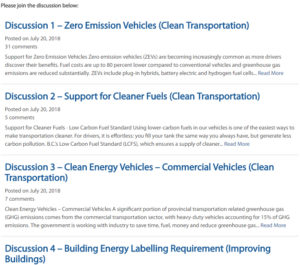 Monday, July 23 ~ BC. BC seeks public comment on clean growth
Monday, July 23 ~ BC. BC seeks public comment on clean growth
BC is developing a long-term clean growth strategy for release in Fall 2018. Public comments can be made on eight discussion papers https://engage.gov.bc.ca/cleangrowthfuture/ . This style of public engagement is not in survey format with pre-set questions. Comments must be composed by the participant, with name and email address required (region and age indicators optional).
The Ministry of Environment and Climate Change Strategy said July 20 that the new clean growth strategy (CGS) will bring together BC’s action on climate change. Work is underway on BC’s energy roadmap to drive sustainable economic growth with cleaner energy and fewer emissions.
The CGS will be integrated with the province’s Economic Development Strategy, #BCTech Strategy and Emerging Economy Task Force and will set out a vision for a clean growth future and a pathway to greenhouse gas (GHG) emission reduction targets. The plan will be expanded as new opportunities arise, with further public input opportunities on priority areas.
The first set of intentions papers covers proposed actions in three key areas – transportation, buildings, and clean growth for industry. The intentions papers are available for comment for the next five weeks — from July 20 to 4pm on August 24, 2018. Individuals and organizations may send additional information by to clean.growth@gov.bc.ca by August 24, 2018.
Written submissions meeting the posting criteria will be posted publicly and online comments will be summarized in a final report.
Priority areas for comment have been recommended by BC’s Climate Solutions and Clean Growth Advisory Council: Zero Emission Vehicles (Clean Transportation); Support for Cleaner Fuels (Clean Transportation); Clean Energy Vehicles – Commercial Vehicles (Clean Transportation); Building Energy Labelling Requirement (Improving Buildings); Financial Incentives (Improving Buildings); Stronger Codes and Standards (Improving Buildings); Low Carbon Buildings Innovation Program (Improving Buildings); Training and Certification (Improving Buildings).
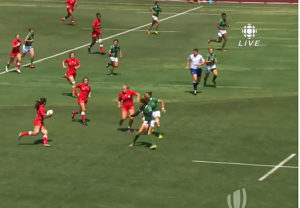
- Tonight Saturday July 21 – Women’s Sevens for Championship Cup placement – Match 29: Russia vs. Canada (for 7th place) livestreamed at 6:38 p.m. PDT | www.cbcsports.ca
- Tomorrow Sunday July 22 – Men’s Sevens for Challenge Trophy semifinals – Match 35 livestreamed at 11:12 PDT. Then either at 3:36 pm PDT (if they lose Match 35) or 4:08 pm (if they win Match 35). | www.cbcsports.ca
Schedules are being updated regularly at: https://www.cbc.ca/sports/rugby/rugby-world-cup-sevens-schedule-results-1.4726781
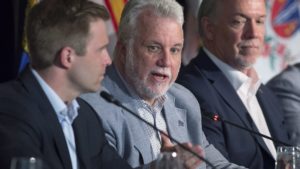
Trade with the United States: “Economic growth, jobs and prosperity for British Columbians depend on strong and fair trade relationships. I spoke with Canada’s premiers about forming a united front to stand up against unfair and unfounded trade sanctions by the United States, and continuing to support Prime Minister Justin Trudeau in his actions to protect Canadian jobs. We discussed a new, focused strategy to support Canadian workers, by reaching out to Americans about the benefits of trade between our countries. As a part of this strategy, we will build on our strong relationships with state governors in a mission to Washington, D.C., during the winter meeting of the National Governors Association in February 2019.”
Suspension of Greyhound services: “Greyhound’s surprise decision to suspend services west of Ontario will affect many people, especially those living in rural and remote communities. B.C.’s call for support from the federal government was met with a commitment to work on the problem together. Along with other provinces, B.C. will urge the federal government to work with Greyhound to extend the notice period, to make sure people have safe and reliable transportation options.”
Cannabis legalization: “Our discussions on cannabis focused on protecting health and safety, while reducing the illicit market as legalization comes into effect later this year. The other premiers and I committed to support an effective transition towards cannabis legalization, and will continue to share information and work toward this goal. We will be urging the federal government for clarity around drug-impaired driving enforcement and screening, funding for education and awareness, and respecting provincial jurisdiction on regulatory decisions and sales.”
Internal trade: “We need to make sure trade across provincial borders works for people and businesses, especially given the U.S. administration’s protectionist measures. The premiers agreed to take steps to move faster on reducing trade barriers within Canada. In addition to the ongoing work at the Regulatory Reconciliation and Cooperation Table under the Canadian Free Trade Agreement, we will be holding a meeting of first ministers this fall, that will be focused on the economy and addressing productivity, competitiveness and improving trade.”
Health care:
“I reiterated B.C.’s support for a national pharmacare program. We need a plan that makes sure people can afford the prescription medicine they need, without further burdening the provinces with new health costs. The premiers agreed to push the federal government on a number of issues, including improving access to pharmacare by removing cost barriers for people, and ensuring federal pharmacare funding is long-term, adequate, secure, flexible, and takes into consideration present and future cost pressures.”
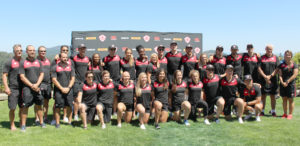
Streaming live: 11:06 am PDT first Women’s first game — Canada vs Brazil. Men’s first game at 1:23 pm PDT.
In this format, every game must be won in order to win the World Cup. Also a summary feature at 8 pm tonight Fri July 20 on CBC TV.
The Rugby Canada’s Men’s and Women’s teams gathered with their coaches, sponsors and supporters at Bear Mountain Resort in Langford July 12, for a send-off to this weekend’s World Cup in California.

Watching his back for both trade dealings with the US, and also domestically with the next federal election looming in October 2019, Prime Minister Justin Trudeau shuffled his cabinet today, July 18.
It’s a toughened up machine. Good solid performers on various levels (both political and breadth of skill sets) are untouched and left in place — notably Foreign Affairs Minister Chrystia Freeland and Minister of Public Safety and Emergency Preparedness Ralph Goodale. Finance Minister Bill Morneau is entirely in the safe zone as is Justice Minister Jody Wilson-Raybould. All of this essentially signals that Trudeau feels the primary planks of good governance are solidly in place.
Pulled higher up in the ranks for an obvious job well done was first-term MP Bill Blair, who brought the cannabis legalization file through all the hoops including good communications and media handling. He’s now the Minister of a new portfolio called Border Security and Organized Crime. He had carried the cannabis legalization process serving as parliamentary secretary to both Justice Minister Jody Wilson-Raybould and Health Minister Ginette Petitpas Taylor.
Set aside to varying degrees were MPs who did not bring the required best to the table, including Mélanie Joly who while Heritage minister lost traction for her government on things like Netflix; she’s now Minister of Tourism, Official Languages, and Francophonie.
Gone from Tourism and Small Business is government house leader Bardish Chagger. Attention to small business now comes under May Ng as Minister of Small Business and Export Promotion, who has only held a seat since a 2017 by-election to replace John McCallum who in March 2017 was set on a new course by Trudeau as the ambassador to China.
Treasury Board President Scott Brison who helped navigate the public delivery of information about complex financial changes in Canada over the past few years becomes minister of digital government.
Jim Carr who helped Finance Minister Bill Morneau play tough on the TransMountain Pipeline this year file moves from Natural Resources to International Trade Diversification. The tough-guy edge is needed with the ongoing trade negotiations with the US.
Having handled the Infrastructure ministry since the start of Trudeau’s majority government in 2015, Edmonton-based Amarjeet Sohi is now Minister of Natural Resources, sending a signal to Alberta that the Liberals are there for the Alberta oil industry. The Infrastructure portfolio oversees large budget expenditures right across the country, but to date the rollout of projects has been slow (oftentimes due to partnership funding complexities with provinces, local governments and private players).
Crown-Indigenous Relations Minister Carolyn Bennett has “northern affairs” dropped from her title, probably just due to workload and travel involved in that file.
Long-time friend of the Prime Minister, Dominic LeBlanc moves from Fisheries and Oceans to Intergovernmental Affairs, Northern Affairs and Internal Trade.
A new Ministry for seniors issues has been set up under Hamilton MP Filomena Tassi. Hamilton is in the steel-industry belt of southern Ontario, giving a nod to trade issues.
Pablo Rodriguez, who was serving as chief government whip, becomes minister of heritage and multiculturalism.
Having proven to be a careful but enthusiastic communicator, François-Philippe Champagne moves from International Trade to Infrastructure and Communities.
Vancouver MP Jonathan Wilkinson becomes minister of fisheries, oceans and the Canadian Coast Guard, therefore putting in place a west-coast slant on ocean-side politics.
Carla Qualtrough, remains minister of public services and procurement despite the ongoing Phoenix pay system crisis, and gets the added portfolio of Accessibility (padded in following the departure of Sport Minister Kent Herr from cabinet earlier this year — who with his own requirement for mobility by wheelchair had been a face for the accessibility-community).
Overall, Trudeau is strengthening the Liberal base in Ontario and Alberta. That’s to help balance against the ideological conservative push now with Premier Doug Ford in place in Ontario, and to maintain good ties with the resource industry and business community in Alberta. As well, there is likely a political concern about balancing out what the Liberals might to expect to lose in the way of seats in BC in 2019 given the pipelines and oceans protections challenges with the NDP/Green government in BC; in 2015 the Liberal BC seats were the highest in BC since the 1970s under Pierre Trudeau’s Liberal leadership.
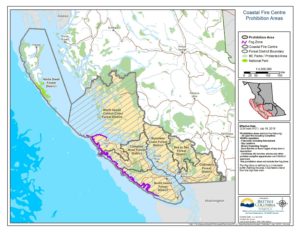
Tuesday, July 17 ~ On Wednesday, July 18 at noon, all open burning (including campfires and Category 3 fires) will be prohibited within the Coastal Fire Centre, with the exception of Haida Gwaii and the area known as the fog zone.
Category 2 open burning is already prohibited in the region. The additional prohibitions will help prevent human-caused wildfires and protect public safety. They will remain in effect until Oct. 19, 2018, or until the public is otherwise notified. A map of the affected areas is available online at: http://ow.ly/j94230kZQgz
the fire prohibitions are due to high temperatures and no rain in the immediate forecast. Since April 1 of this year, 69% of wildfires in the Coastal Fire Centre have been caused by people. Human-caused wildfires are considered to be entirely preventable, and can divert critical firefighting resources away from naturally occurring wildfires.
These prohibitions apply to all public and private land, unless specified otherwise – for example, in a local government bylaw. Please check with local government authorities for any other restrictions before lighting any fire.
In Sooke, their prohibition announcement came out this afternoon, specifying that their ban applies to all open burning including campfires, beach fires and backyard fire pits within the District of Sooke. Burn barrels are prohibited year-round. “Propane and gas fueled BBQ’s and campfires are still permitted but are to be used with caution and only in appropriate areas,” says Matt Barney, Assistant Fire Chief, Sooke Fire Department.
CSA-rated or ULC-rated cooking stoves that use gas, propane or briquettes and portable campfire apparatus (using briquettes, liquid or gaseous fuel) are okay in the Coast Fire Centre, so long as the height of the flame is less than 15 cm in height.
The following activities are also prohibited:
* open fires that burn woody debris in outdoor stoves
* the use of stoves and other portable campfire apparatuses that are not CSA-approved or ULC-approved
* the use of tiki torches, fireworks, firecrackers, sky lanterns, chimineas, burning barrels or burning cages of any size or description
* the use of binary exploding targets (e.g. for rifle target practice)
Anyone found in contravention of an open burning prohibition may be issued a ticket for $1,150, required to pay an administrative penalty of $10,000 or, if convicted in court, fined up to $100,000 and/or sentenced to one year in jail. If the contravention causes or contributes to a wildfire, the person responsible may be ordered to pay all firefighting and associated costs.
The Coastal Fire Centre covers all of the area west of the height of land on the Coast Mountain Range from the U.S.-Canada border at Manning Park, including Tweedsmuir South Provincial Park in the north, the Sunshine Coast, the Lower Mainland, Vancouver Island, the Gulf Islands and Haida Gwaii.
To report a wildfire or open burning violation, call 1 800 663-5555 toll-free or *5555 on a cellphone. For the latest information on current wildfire activity, burning restrictions, road closures and air quality advisories, go to: http://www.bcwildfire.ca
Wildfire news on Twitter at https://twitter.com/BCGovFireInfo and on Facebook at
http://facebook.com/BCForestFireInfo
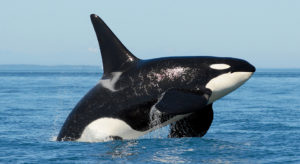
Friday, July 13 ~ BC. Keeping a distance from whales: new regulations. Whales and other marine mammals are the subject of new Canadian regulations (previously recommendations) by which boaters are to maintain certain distances or be faced with hefty fines.The new rules that came into effect July 11 require boaters to maintain a 100-metre buffer zone (200 metres for orcas).
Under the Fisheries Act, penalties range from $100,000 to $500,000. Repeat offences could result in a higher fine amount or even imprisonment, according to the Department of Fisheries and Oceans.
The new rules will impact the on-water tourism industry, particularly whale-watching excursions. Vessels must stay out of the path of oncoming whales out to 400 yards (366 m). Vessels may not intercept a whale or be positioned in the path of a whale.
Among other reasons, the proximity of loud motorized vessels is thought to interfere with the ability of whales to communicate with each other for feeding or maintaining pod cohesion.
In BC, the orca is an iconic aspect of regional arts and culture, tourism, and Indigenous culture.
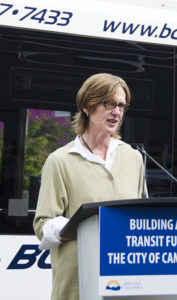
Wednesday, July 11 ~ BC. BC Transportation and Infrastructure (MOTI) Minister Claire Trevena said yesterday that she will hold a discussion on Thursday July 12 with her western Canada counterparts about different approaches to providing intercity bus service. [See this article on its own page]
This is in the wake of Greyhound Canada announcing that by October 31, 2018 it will end all intercity bus service in western Canada (points west of Sudbury, Ontario through Manitoba, Saskatchewan, Alberta and BC).
“We got very little notice that Greyhound was pulling out of western Canada,” Minister Trevena told media. “It’s a a Canadian problem affecting people in Ontario, out to the coast,” she said. Only one route remains in BC — that one runs Vancouver-Seattle, operated by the Greyhound out of the United States.
Trevena says that the BC government aims to assure people that they will have safe, reliable transportation by bus. She articulated that not everyone can afford to travel by plane, train or car.
“We”ll need to have some bus service, and will try to deal with that before October 31,” said Trevena, adding that private bus service providers will be part of a possible future solution. She also said the Ministry would be “talking to people within communities” (apparently including municipalities) to try and “make sure the gap is filled”.
“Very quickly private operators came in and built a route,” said Trevena about working with private operators in other situations. “Nothing is off the table.” BC Transit will also be in the discussion loop.
“We want to make sure people can travel safely and affordably around this province,” the Minister declared, adding that “the federal government does have a role to play” in seeing that bus service is provided “right through” Canada. “They have not done so, so far.”

Trevena said that the BC Government did not want to directly subsidize Greyhound, in part because the company’s services were not meeting the needs of riders. She said that daytime routes are more suitable for intercity travel.
BC has been running a pilot project in the north on Highway 3 and some other interior routes this year, in response to Greyhound providing an earlier notice about “pulling out in the north”, said Trevena.
It would seem by Trevena’s surprise at Greyhound’s announcement this week, that MOTI did not extrapolate a pullout beyond the north. That’s even though “Greyhound executives spent the last five years trying to work some resolutions out,” as Trevena told media yesterday.

Monday, July 9 ~ BC. Greyhound Canada bus service ends in BC as of October 31, 2018. That’s in addition to all of the private company’s bus services ending in Manitoba, Saskatchewan and Alberta on that date, as well as in Ontario west of Sudbury. [Read this article on its own page]
One route remains in BC — from Vancouver to Seattle — because that route is run by the US division of Greyhound. This will have a significant impact on rural transportation services in BC.
Greyhound Canada cited financial survival (due to a significantly low level of ridership — worsening since 2010) as their reason for dropping the service.
Low-cost airline travel and more efficient cars are likely part of the competition factor. Business critics say that Greyhound did not appreciably improve any of their services over the years, thereby offering less and less of a desirable transportation option.
Upon hearing the news today, BC’s Minister of Transportation and Infrastructure Claire Trevena issued a statement in response to news that Greyhound Canada is discontinuing intercity bus service in British Columbia, and much of Canada:
“Greyhound’s decision to completely eliminate service in Western Canada by October 31, 2018 is hugely problematic for people who depend on Greyhound in the Interior, Sea-to-Sky, and to get to and from Alberta. This move will leave people with limited options to get around, and this will likely impact the most vulnerable.
“It’s unfortunate that Greyhound did not communicate their plans sooner. At no point did Greyhound reach out to me, or my staff, to have a conversation on solutions to keep people connected – something I would have expected, given their long history in this province,” said Trevena.
The BC Government will be looking into options: “In the weeks and months ahead, I will be sitting down with other service providers, the private sector and local government to discuss how we can ensure people have access to safe, reliable and affordable transportation to get from one community to the next. In the meantime, I hope that other local, private operators will see an opportunity to bring a badly needed service to the parts of the province most affected by Greyhound’s decision.”
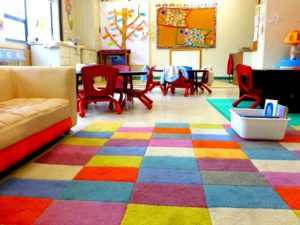 Sunday, July 8 ~ BC. To help families be provided with child care, Budget 2018 announced a $221-million investment in the Childcare BC New Spaces Fund. More details were announced July 6:
Sunday, July 8 ~ BC. To help families be provided with child care, Budget 2018 announced a $221-million investment in the Childcare BC New Spaces Fund. More details were announced July 6:
• Streamlined application process and a continuous intake, rather than fixed application dates, allows child care providers to apply for funding when they need it, even if they are planning longer-term projects. Helps ensure continual supply of licensed child care spaces.
• Boards of education to have 100% eligibility (up from 90%) of their total project cost ($500,000 maximum), for child care spaces they create.
• For the first time: prioritizing or targeting funding to public-sector partnerships — including local governments and boards of education — that are looking to create child care spaces with other non-profit providers. These partnerships may apply for up to 100% of the total cost of their project (to $1 million maximum). Parents will benefit from public projects that provide greater stability and help protect them from lease or fee increases.
• Successful applicants for Childcare BC New Spaces funding must participate in the Child Care Fee Reduction Initiative to help ensure that the new spaces remain more affordable for BC families.
• Child care spaces created by child development centres or Indigenous communities remain eligible for 100% their project costs, up to a maximum of $500,000. This will help ensure that children throughout BC will continue to have their physical and cultural needs met through programs that are tailored specifically for them.
• Not-for-profit organizations will be supported to create new child care spaces, with these organizations remaining eligible for up to 90% of their total project costs, up to a maximum of $500,000. Private child care providers remain eligible for 75% of the total cost of their project, up to a maximum of $250,000.
Info sessions coming soon: www.gov.bc.ca/childcare/newspacesfund
Friday, July 6 ~ BC. By early August 2018, the Liquor and Cannabis Regulation Branch will open its application process.
It is strongly recommended that potential licensees visit the website to carefully review all the available materials to be prepared for the opening of the application intake site, it was stated in a July 5 news release from the Ministry of Attorney General.
For information on cannabis retail licensing, visit: www.gov.bc.ca/cannabisregulationandlicensing
The Liquor Control and Licensing Branch has been renamed the Liquor and Cannabis Regulation Branch, representing its new additional responsibility of licensing and monitoring the retail sale of non-medical cannabis in British Columbia.
Thursday, July 5 ~ JUAN de FUCA. [UPDATE at 11:30 pm July 5 – fire partially contained, size is 84 hectares.]
The size of the wildfire area at Tugwell Creek was up to 100 hectares as of late last night. It’s one of 54 fires currently listed as a ‘fire of note’ in BC. BC Wildifre crews will be on scene again today, with the continued use of planes dropping fire retardant and helicopters dropping water.
The fire that started July 2 somehow became ignited in an area of timber leftovers from logging (known as ‘slash’).
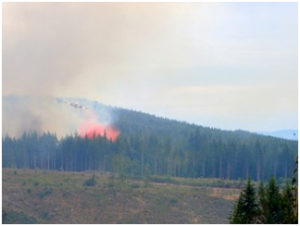
The size of the burning area is now listed at 85 hectares (up from 25 hectares as of this morning, and 60 hectares around 5:30 pm). The fire was first reported on July 2 with a size of about four hectares.
“Less wind and some rain would help,” says Juan de Fuca Emergency Coordinator Jeri Grant.
Today three helicopters dumping water and a plane dumping fire retardant were used at the scene.
Smoke is reaching through the west shore and other areas of Greater Victoria, creating grey skies.
Photo taken today July 4 by Al Wickheim from the west ridge above Tugwell Creek, about six miles upstream. Water tanker dropping fire retardant Tugwell Creek. Winds are from the east in this photo.
“Winds are variable and some fire crowning is making this a hazardous fire for air and ground crews,” says Wickheim. “We could hear the fire crackling from where we were. Fortunately there is no immediate threat to the bee hives of Tugwell Creek Meadery,” he said on Wednesday evening.
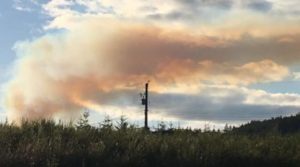
The area that is burning now exceeds 35 hectares (as of 6 pm July 4) due to more active high winds this morning, says Juan de Fuca Emergency Coordinator Jeri Grant
Of 60 active fires in the province (as of midnight July 3), the Tugwell Creek fire is one of three listed as “out of control” by the BC Wildfire Service. The fire was first reported on July 2 with a size of about four hectares.
“People don’t need to be alarmed,” says Grant. She says that people will see more fixed-wing planes dropping retardant, more helicopters dumping buckets of water, and more smoke. Welfare management has also sent out more ground crews.
The forest reserve land is part of Juan de Fuca, and the fire began in a slash area (where forestry activity leaves vegetative debris behind). There hasn’t been any lightning, so the fire is thought to have been caused by one or more persons with either cigarette butts, campfire, or use of ATVs in the back road areas. Even minor sparks can set off forest ‘fuel’ (leaves, branches, grassy areas, etc).
Actions are being handled by Wildfire BC and not the Otter Point Fire Department because the fire is beyond the Otter Point Fire Department boundaries. The fire is about 5 to 6 km away from Tugwell Road where there are homes and farms.
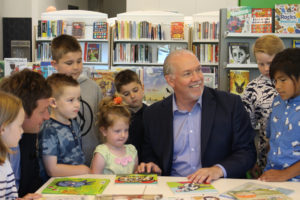
The small gathering took place at the sxʷeŋxʷəŋ təŋəxʷ James Bay Branch of the Greater Victoria Public Library this afternoon, July 3.
Premier Horgan clearly enjoyed the interactive time with his very young audience. He joked that after reading a fun story to the kids he would be going back to his office to do more reading as part of his job.
People who just happened to be at the library today and the parents of today’s group of kids had this spontaneous opportunity to chat briefly with the Premier. One older woman clearly expressed her gratitude to Horgan for “all he is doing” for people in BC.
While this event was held in downtown Victoria, the Greater Victoria Public Library system includes libraries in the west shore including the Westhills and Goudy branches in Langford, and the Juan de Fuca branch in Colwood.
Colwood Councillor Rob Martin is chair of the Greater Victoria Public Library board.
[Read this article on its own page]
 Tuesday, July 3 ~ The BC Government is looking into how the implementation of a basic-income in BC might be done. Three researchers will explore the feasibility of a basic-income pilot project, and will look at how basic-income principles might be used to improve the existing income and social-support system in BC.
Tuesday, July 3 ~ The BC Government is looking into how the implementation of a basic-income in BC might be done. Three researchers will explore the feasibility of a basic-income pilot project, and will look at how basic-income principles might be used to improve the existing income and social-support system in BC.
This is part of the Province’s efforts to reduce poverty and prepare for the emerging economy, it was stated in a news release today July 3. This work also relates to a commitment in the Confidence and Supply Agreement between government and the BC Green Party caucus.
David Green, from the Vancouver School of Economics at the University of British Columbia (UBC), will chair the expert committee. Joining him will be Jonathan Rhys Kesselman, from the School of Public Policy at Simon Fraser University, and Lindsay Tedds, from the School of Public Policy at the University of Calgary. Committee work begins this summer, assisted by researchers at UBC.
The idea that knowing a basic-income would be available could reduce survival anxiety, which in turn could help reduce stress-related illness and thereby reduce costs in the health care system. There is a correlation as well to domestic and property-related violence as well, through lack of an assurance of basic sustenance. As the fear of basic survival is minimized, people look to more productive and appropriate uses of their time, talents and energy. The BC Green Party cites that when basic income was introduced in Dauphin, Manitoba, hospital visits declined by 8.5%.
The committee’s work will include consideration of the impact that advances in technology and automation, and other shifts, are predicted to have on the labour market over the next several decades.
The research will also include simulations that will look at how various basic-income models work with BC’s population. These will identify the potential impacts and financial implications of different approaches and economic conditions on BC citizens.
“The researchers will look at whether a basic income is a viable option to reduce poverty, build financial security, and increase inclusion and well-being,” says Shane Simpson, Minister of Social Development and Poverty Reduction. “This is a complex area of study, and our government looks forward to learning more about how to enhance the income-support system, to achieve measurable and lasting improvements for people living in poverty.”
“Amidst trends like automation, part-time and contract work, the nature of our economy and the jobs within it are rapidly shifting,” says BC Green caucus leader Andrew Weaver. “There is strong evidence that basic income can provide greater income security, while saving costs in other areas. We proposed exploring how basic income could work in BC, because government should have a plan for the changes on the horizon. The panelists are highly qualified, knowledgeable and creative thinkers. I am excited to work with them on this innovative project.”
“Recent years have seen disproportionate increases in part-time and contract work,” says Weaver. Wages have stagnated while the cost of living in our cities has spiralled out of control. Meanwhile, studies estimate that half of Canadian jobs could be impacted by automation in the next decade alone. We proposed exploring basic income in BC because we believe that government needs to have a plan for the changes on the horizon.”
“When people are secure, they are more likely to feel confident starting a new business or returning to school. Investing in British Columbians’ success is the best way we can ensure a thriving local economy for generations to come. Further, research shows that basic income can provide income security while reducing the costs of other supports,” said Weaver in a news release today.
David Green, chair of the Basic Income Expert Committee and professor, Vancouver School of Economics, UBC says:
“Much of my work centers on policies that can reduce inequality and create a more just society. I am pleased to have an opportunity to contribute to an in-depth examination of the implications and benefits of a basic income and enhanced income support structures here in BC.
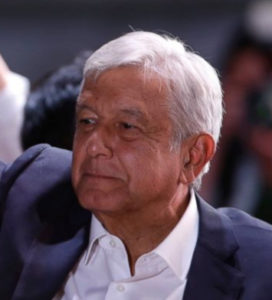
Monday, July 2 ~ NATIONAL. North American political and trade relations continue to undergo complexities.
Following his overwhelming majority win, Mexico’s left-leaning president-elect Andres Manuel López Obrador said he supports reaching a deal on renegotiating NAFTA with the United States and Canada. However, there is uncertainty in the overall NAFTA process now with an escalating trade war of tariffs and counter-tariffs between the US and Canada, and now with the new Mexican president not officially taking office until December 1.
Prime Minister Justin Trudeau spoke today with López Obrador to congratulate him on his election as the next President of Mexico. Trudeau underscored the close friendship and dynamic partnership between Canada and Mexico, based on shared values, common goals, and strong people-to-people ties.
The Prime Minister and the President-elect look forward to cooperating on an agenda to create good jobs for people in both countries. The PMO’s office said the two leaders discussed the mutually beneficial economic and trading relationship between the two countries, and their shared priority of updating the North American Free Trade Agreement for the betterment of their peoples.
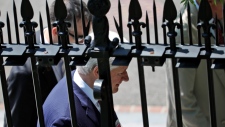
Trudeau and López Obrador “emphasized their desire to work closely together on issues that matter to both countries such as creating economic growth that works for all, advancing the rights of Indigenous peoples, and shaping a better future for Canadians and Mexicans alike”.
To possibly complicate matters (at least perceptually), former Canadian Prime Minister Stephen Harper had private meetings with key US trade officials at the White House today, July 2. As a private citizen, Harper had not notified Trudeau or the Canadian government of his trip to Washington.
By contrast, former Canadian Prime Minister Brian Mulroney (who led the development of the original NAFTA agreement with then-US president Ronald Reagan) has been cooperating with and supporting Canada’s and Trudeau’s efforts to keep renegotiation of NAFTA on an even keel.

Yesterday, on Canada Day, Trudeau skipped his traditional partying on Parliament Hill and instead headed across the Canada on a 3-stop tour. In Leamington, Ontario he visited with workers at a plant where tomato paste is made for production of ketchup by the Canadian company French’s. In Regina he met with steel plant workers. In Dawson City, Yukon he attended a community barbecue to wrap up the day.
Canada’s tariffs are matched dollar-for-dollar to a total of $16.6 billion in “unjustified” set of US tariffs on Canadian steel (25%) and aluminum (10%). The Canadian counter-tariff list is political in nature to assert pressure on US lawmakers in key states where their state economies normally gain by trade with Canada.
Some of the US products that Canadians may quickly find to be more expensive: household paper products; other paper and cardboard products; sewing machine accessories; printed postcards; certain types of stoves, fridges and dishwashers, washer/dryers; lawn-mowers; sailboats, motorboats; beauty supply products; packaged pizza and quiche; maple syrup, candies and chocolate products; fresh orange juice, gherkin pickles, strawberry jam, soya sauce, ketchup & mayo; dishwasher detergent, glues, adhesives.
After receiving public consultation about the first list released June 1, things like peanut butter were removed from the Canadian tariff list. Full list: https://www.fin.gc.ca/access/tt-it/cacsap-cmpcaa-1-eng.asp
Sunday, July 1 ~ BC. A single Lotto 6/49 ticket purchased in Richmond has matched all six numbers to win the $7 million jackpot, but the winner has not come forward yet.
The retail location where the winning lottery ticket was purchased, as well as the identity of the lottery winner(s)’ will be announced after the prize has been claimed.
• Lotto 6/49 was launched June 12, 1982.
• Odds of winning a Lotto 6/49 jackpot are one in 13,983,816.
• 68% of Lotto 6/49 tickets are sold via Quick Pick.
• The largest Lotto 649 jackpot ever offered in Canada was $64 million for an October 2015 draw (ticket was purchased in Mississauga, Ontario).
Lottery ticket revenues in BC are used for health care, education, and through municipalities for programs across the province.
All lottery prize winners across Canada have 52 weeks from the draw date printed on their ticket to come forward to claim their prize.
Sunday, July 1 ~ NATIONAL. Prime Minister Justin Trudeau today issued the following statement on the results of the Mexican presidential election on the same day that he visited three locations across Canada (Leamington, Regina, Dawson City) to support workers on the day Canada brought in tariffs on US products:
“On behalf of the Government of Canada, I congratulate Andrés Manuel López Obrador on his election as the next President of Mexico. Canada and Mexico are close friends and longtime partners. We share common goals, strong people to people ties, and a mutually beneficial trading relationship that is the envy of the world – reflected in our joint effort to update the North American Free Trade Agreement for the 21st century.”
“Canada is proud of its close links with Mexico, and we will continue to collaborate on issues that matter to citizens from one end of North America to the other.”
“I look forward to working closely with President-elect López Obrador, his administration and the Mexican Congress to build on the vibrant partnership between our two countries, create economic growth that works for everyone, and advance human rights and equality. Together, we can deepen our strong relationship, and shape a better future for Mexicans and Canadians alike.”
Back to the BC & National Breaking News page | Back to the Main page


